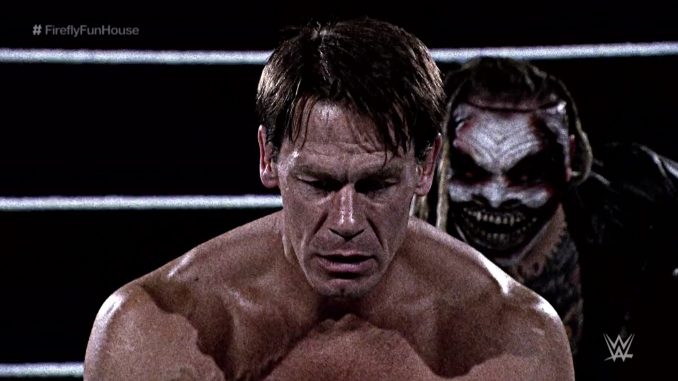
In the hours since WrestleMania 36, much has been said about the Firefly Fun House match between John Cena and “The Fiend” Bray Wyatt with many praising WWE for its bold attempt at a unique form of storytelling.
Others were less enthused, with sentiment among some detractors dismissing it as a random display of nostalgic imagery. While many wrestling storylines are rightfully unworthy of focus and detailed analysis, I felt it was important to explain why this one was.
The WM36 Firefly Fun House was a villain’s carefully designed deconstruction: An exposé of the fallacies of the John Cena character.
This WrestleMania match is going to accomplish what should have happened 6 years ago: Ending the existence of the most overhyped, overvalued, overprivileged WWE superstar in existence. – John Cena, WWE SmackDown 3/13/20
Prelude
John Cena returns to SmackDown on February 28th, 2020 with an announcement: He doesn’t plan on having a match at WrestleMania this year. Instead, he opts to “do the right thing” by relinquishing his spotlight to younger talent.
“The Fiend” Bray Wyatt appears and challenges him to a match. Cena, in spite of his earlier speech, accepts without hesitation.
When asked why he accepted the match, Cena explains his belief that Bray Wyatt has been a constant presence standing in the way of others. He intends on stopping him to free up opportunities for talents such as Drew McIntyre and Velveteen Dream.
Bray believes Cena’s self-sacrificing image to be insincere. He knows this because of his experience with John in 2014.
WrestleMania XXX in this context, is portrayed as a traumatic event for Bray. In a year where he was the hottest new debut in WWE, WrestleMania XXX was meant to be his coronation (as foretold by Sister Abigail), cemented with a victory over the company’s top star.
Instead, the loss to Cena is blamed for the ensuing floundering years of Bray’s career. A career that has arguably failed to reach similar heights until the arrival of “The Fiend”, a character which Bray credits for saving it.
Cena on the other hand, is portrayed to have parlayed his extended existence in the WWE limelight into the pinnacle of idolatry: A career in Hollywood.
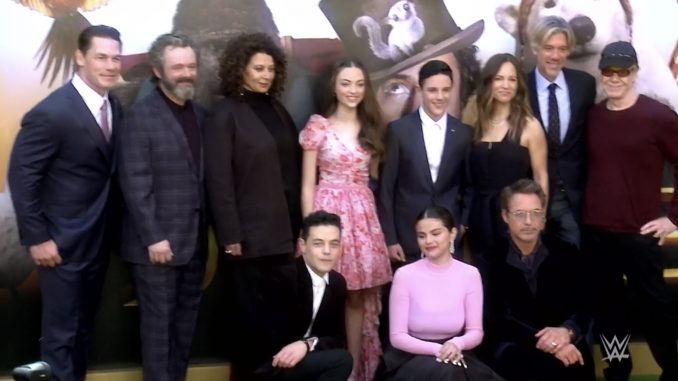
Feeling robbed of his time in the spotlight, Bray embarks on a mission to expose Cena as a hypocrite. How can John Cena claim to care about the future when he’s repeatedly beaten it down to get to where he is today?
Chapter 1: The Match
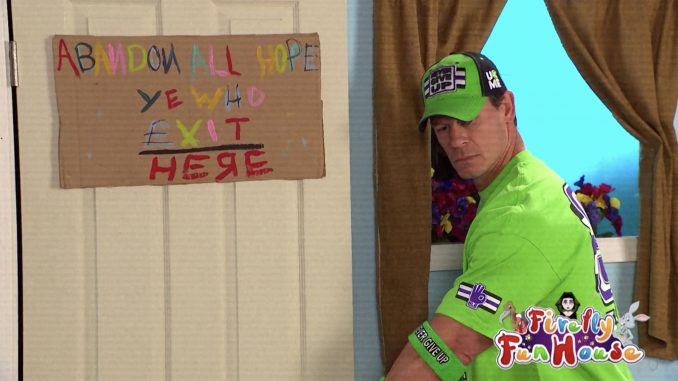
As John Cena enters the Performance Center, Bray immediately leads him to the real battlefield; a place where “angels and demons are neighbours”. Bray is referring to the mind. In this case, Cena’s own.
Chapter 2: Ruthless Aggression
Cena’s first stop in his memory bank is 2002, as the Vince McMahon puppet delivers his “Ruthless Aggression” promo on Raw.
Who has enough “Ruthless Aggression” to make the necessary sacrifices of mind, body and soul in order to be a success in this company? – Vince McMahon, WWE Raw 6/24/02
Motivated by his boss’ words, a rookie John Cena would make his debut days later on SmackDown, famously answering an open challenge from Kurt Angle.
Clad in generic tights decorated with local sports teams’ colours, this period of John Cena’s career is arguably only remembered for this singular moment. The lone surviving memory of the character is how Bray portrays him within this projection, as 2002 Cena, then without a voice or personality, is unable to define himself with anything more than a slap, an angry face and a one-note refrain of the phrase and attitude, “Ruthless Aggression”. Cena is nothing more than a living embodiment of McMahon’s latest catchphrase.
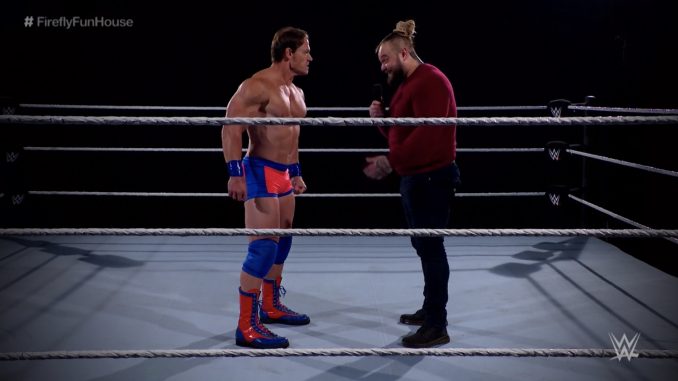
Viewers of WWE Network’s Ruthless Aggression series will have had a recent glimpse into this volatile era of Cena’s career, when he was reportedly close to being released. Bray teases this generic, pandering version of Cena, reminding John of his greatest failure.
But how did we get to this point?
Chapter 3: Childhood
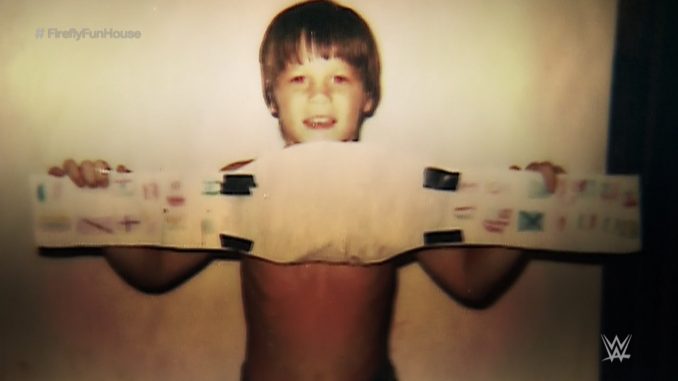
Saturday Night’s Main Event provides a colourful backdrop to showcase a young John Cena’s earliest wrestling fantasies.
Within this setting, Bray continues to critique Cena’s integrity, reducing him to an image of a stereotypical 80’s wrestler named Johnny Large Meat who cares more about his physique than his wrestling ability. Bray believes Cena has only received his myriad opportunities because of his muscles, much like the wrestlers of the era he grew up watching.
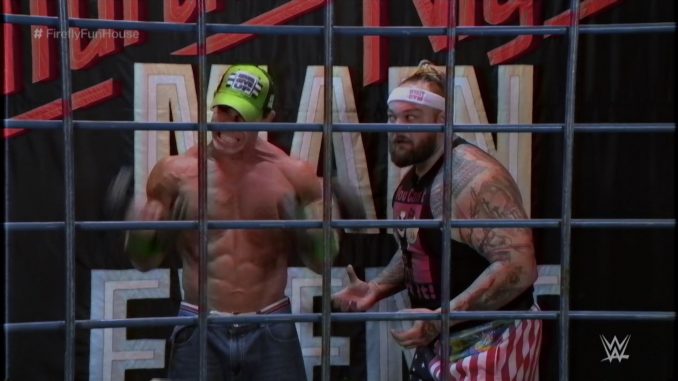
Large Meat cuts a stereotypical, aggressive 80’s promo, focusing on his body by bicep curling to such an unhealthy degree that he exhausts his arms, rendering him unable to fight. The implied critique is that a younger Cena spent so much time on his body that he never properly learned how to wrestle.
Bray surmises that Cena’s obsession with his body stems from his true desire: Not to be a pro wrestler, but to be an idol that demands the worship of others.
Chapter 4: Doctor of Thuganomics
Even as Cena finds success with this character in the mid-2000’s, Bray critiques this form for being limited and disingenuous, as exemplified here by Cena’s inability to express himself in anything more than a combination of rhyme, R-rated double entendre (“Put my junk in a glove and call him ‘Mr. Suck It Bro’”) and low-hanging fat jokes (“‘Cause unlike Husky Harris, that’s a weight that I can manage”).
The presentation is a further attack on Cena’s integrity for allowing himself to stoop to these levels of “cheap heat”-seeking in order to finally gain the acceptance of the audience.
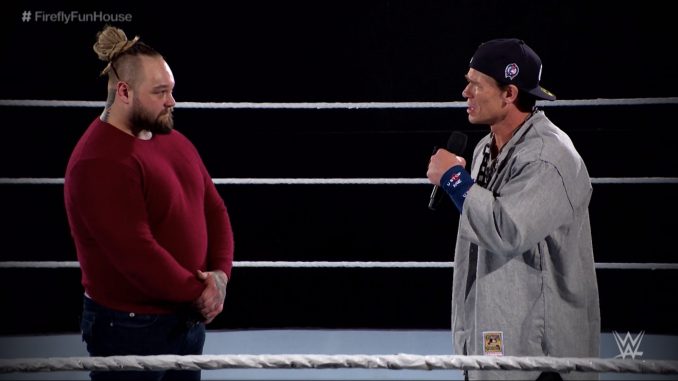
Cena crassly expresses Bray’s ineptitude for stardom by saying, “You’re a slut for opportunity, you’ve blown every chance.” Bray responds, in a direct, gimmick-free voice, that he’s had to work for every opportunity, unlike Cena. He chastises John for being a hypocritical bully; a false idol who will do anything for fame, including poking fun at others’ weaknesses (such as Bray’s weight).
Bray offers one last opportunity for Cena to repent, but Cena is so steadfast in his own myth that he responds the only way his character knows: To fight back. In his Thuganomics guise, this response manifests itself as a predictable “deez nuts” joke and a chain-loaded punch.
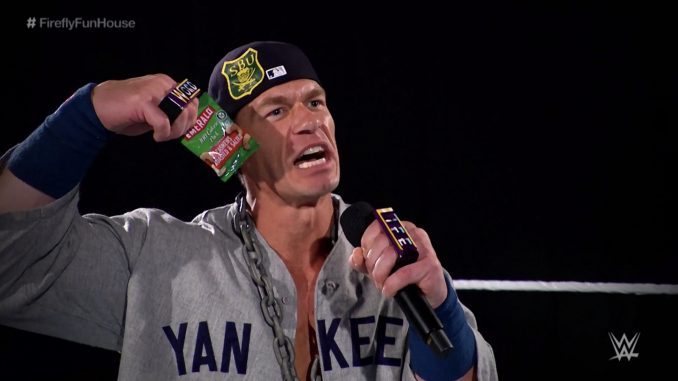
Having passed up his final offer, Bray decides to proceed with his plan.
Chapter 5: WrestleMania XXX
Bray decides to rewrite his own greatest failure from 2014. This time however, he knows that a simple pinfall defeat would have no lasting repercussions on “Superman”.
Bray knows that in order to establish lasting change within John, he needs to convince him of who he really is: A man so obsessed with fame that he’s willing to do anything to achieve it, including cheating to win.
He gives Cena another opportunity to use the steel chair he refused to use during their match from 2014. This time, Cena accepts.
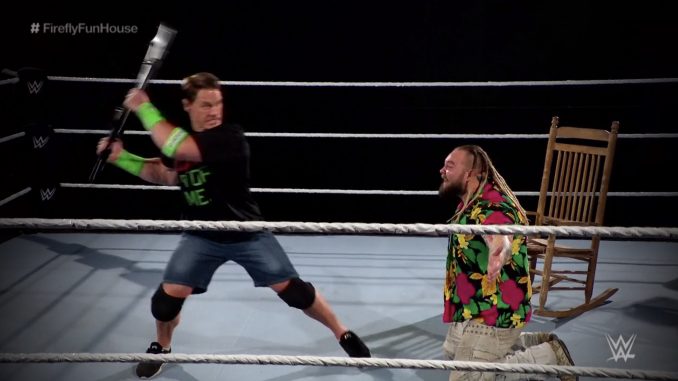
Bray vanishes. It doesn’t matter whether or not the chair makes contact. Bray has already won.
Chapter 6: Heel John Cena
We’re transported to a vision where John Cena has finally tapped into his repressed dark side. Bray (dressed as Eric Bischoff) illustrates this by turning Cena into an avatar of the most famous babyface to turn heel in wrestling history, “Hollywood” Hulk Hogan.
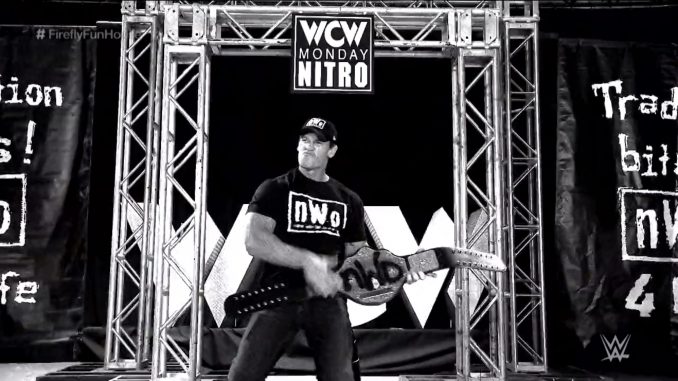
In this vision, Cena has completed a fateful transformation into his childhood idol. Hogan, a man often criticized for overstaying his time in the spotlight at the expense of underprivileged talents, managed to prolong his oppressive dominance for multiple generations by tapping into his own dark side as part of the nWo.
Cena fully embraces the rage he’s been withholding from himself for years. As he violently beats Bray down, we see flashbacks to his most volatile crowd reactions: ECW One Night Stand 2006, MITB 2011; all while the tune of “Cena Sucks” refrains in the background. The wall he’s built up surrounding himself from criticism has finally been shattered.
Chapter 7: The Fiend
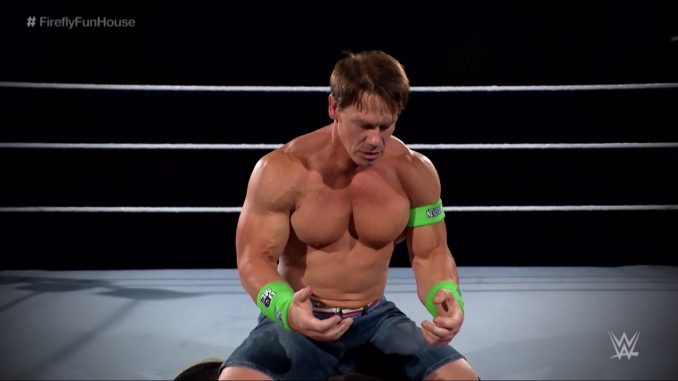
In this moment, Cena realizes that Bray was right. He’s been confronted with all of the ugliest parts of his personality: Vanity, vengefulness, and a desire to do anything in order to stay in the spotlight.
Who has enough “Ruthless Aggression” to make the necessary sacrifices of mind, body and soul in order to be a success in this company?
With Cena shocked at his own revelation, the orchestrator of the entire plan reveals himself.
By finally embracing his own demons, John Cena has let “The Fiend” in.

The pinfall that occurs is merely a metaphor, signifying the defeat of the myth of John Cena as a self-sacrificing hero.
This WrestleMania match is going to accomplish what should have happened 6 years ago: Ending the existence of the most overhyped, overvalued, overprivileged WWE superstar in existence.
How did you interpret the Firefly Fun House? Share your opinion of the match by leaving a comment in this thread in our forum.
